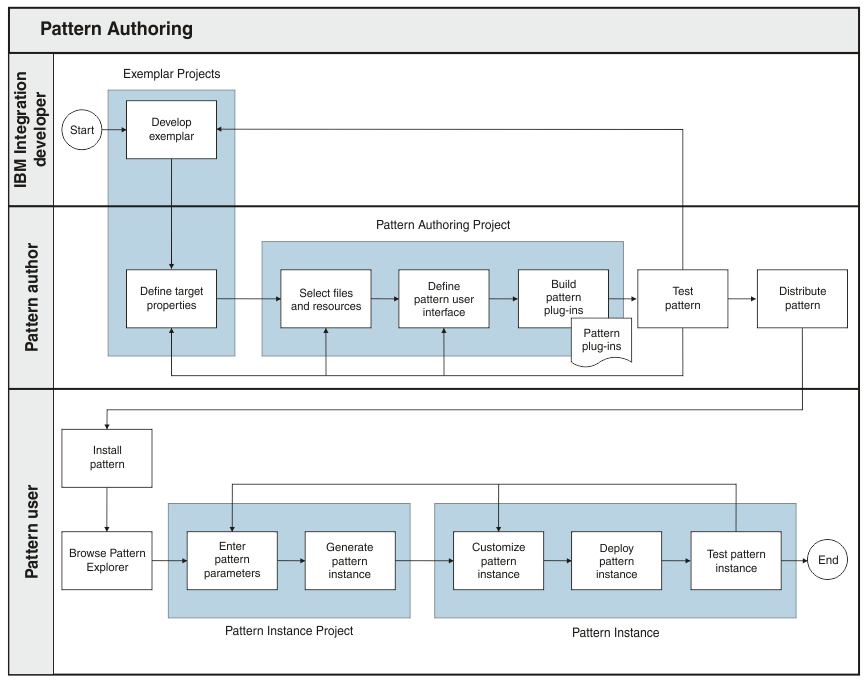Creating a user-defined pattern
The workflow showing the actions required for pattern authoring.

- The IBM Integration Bus developer develops the exemplar. The exemplar is fundamental to the pattern authoring process. It assumes that the exemplar is the starting point for a pattern. Some modifications might be required to the exemplar to prepare it for pattern authoring.
- The pattern author creates a pattern plug-in from the exemplar.
Authoring a pattern is a design activity. Some of the pattern authoring
focuses on the resources in IBM Integration Bus,
for example, defining the target properties for the pattern and configuring
the user interface that is presented to the pattern user. The
pattern author ensures that the pattern can be customized by pattern
users, if required, and that these customizations are not overwritten
if the pattern user regenerates an instance of the pattern. One possible
approach to customization is to include in the message flows of the
pattern one or more subflows that are intended to be customized by
pattern users. The pattern author includes these subflows in a separate
project within the pattern and configures the project so that it is
not overwritten when a pattern instance is regenerated.
The pattern author then shares the user-defined pattern with the pattern user. Patterns are most useful when they are shared with a user base. This user base can be within an organization, or a broader community, for example, open source licensing.
- The pattern user receives a user-defined pattern, customizes it, and uses it in accordance with the requirements of the organization.
Pattern authoring
To create a user-defined pattern, complete the following tasks. "Extending a user-defined pattern" is an optional set of tasks that you can use to add features to your user-defined pattern. For example, by extending a user-defined pattern you can create user-defined patterns that include parameters that pattern users can modify.
- Creating a pattern authoring project
- Selecting the source files to use for a user-defined pattern
- Optional: Adding and removing the project references for a user-defined pattern
- Optional: Configuring a project used in a user-defined pattern
- Optional: Extending a user-defined pattern
- Building pattern plug-ins
- Testing a user-defined pattern
- Packaging and distributing pattern plug-ins
When you have created pattern plug-ins for your user-defined pattern, pattern users can install them to use in IBM Integration Bus projects, see Downloading and installing a pattern archive.